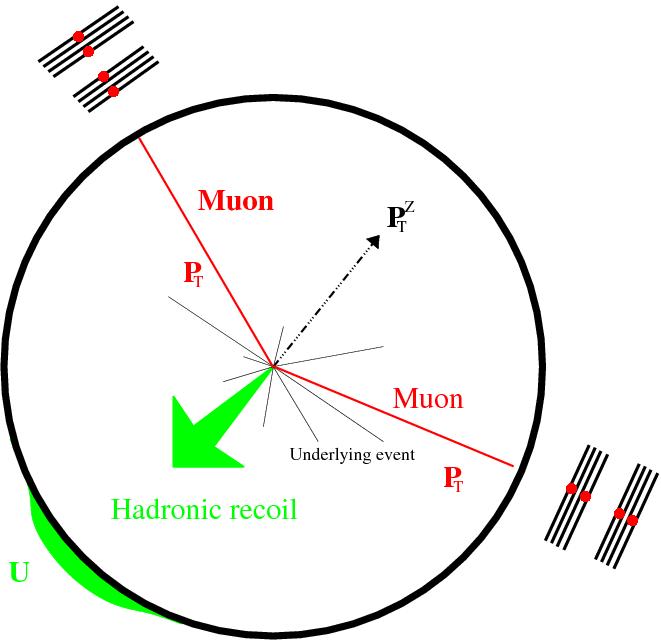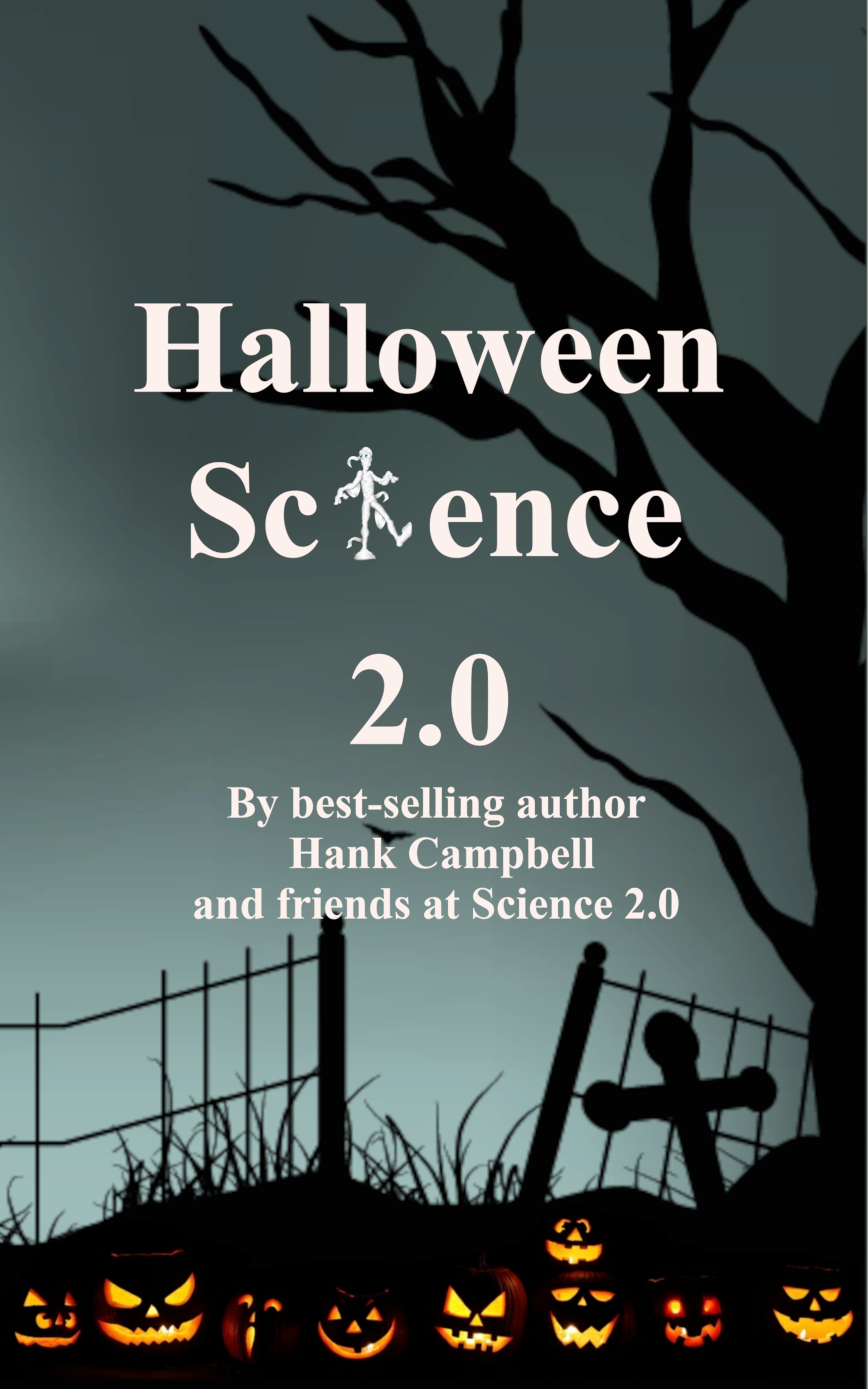In 7 inverse femtobarns of collisions DZERO dug out a total of 455 thousand Z decays to muon pairs, and 511 thousand decays to electron-positron pairs! This is a million Z bosons... We are brought back to the days when LEP produced these particles in similarly large numbers, but the difference here is that producing Z bosons with quark-antiquark collisions rather than electron-positron collisions as LEP used to do enables one to expose very detailed features of something we call "initial state radiation" -the emission of energy by the two quarks that later annihilate into a Z boson.
And DZERO did it quite ingeniously, by employing probably the most sensitive variable among those which describe the properties of the production of Z bosons at hadron colliders.
 A view of a Z boson decay taken transversely from the beam direction is shown on the right. Usually to study initial state radiation and related effects one studies the transverse momentum distribution of the produced bosons (described by the green arrow in the graph on the right), a quantity which can be derived from the momenta and directions of the two leptons (the two red muon tracks) that the Z boson has decayed into. However, even the precisely-determined electron or muon momenta carry some uncertainty, a fact which may remain irrelevant until one has low or moderate statistics, but which at very high statistics becomes a significant source of indetermination.
A view of a Z boson decay taken transversely from the beam direction is shown on the right. Usually to study initial state radiation and related effects one studies the transverse momentum distribution of the produced bosons (described by the green arrow in the graph on the right), a quantity which can be derived from the momenta and directions of the two leptons (the two red muon tracks) that the Z boson has decayed into. However, even the precisely-determined electron or muon momenta carry some uncertainty, a fact which may remain irrelevant until one has low or moderate statistics, but which at very high statistics becomes a significant source of indetermination.DZERO used instead an angle, labeled
 , which is derived from angular information only. Since the electron and muon tracks are determined with very high precision, the chosen variable becomes a more sensitive probe than transverse momentum when large statistics become available.
, which is derived from angular information only. Since the electron and muon tracks are determined with very high precision, the chosen variable becomes a more sensitive probe than transverse momentum when large statistics become available.The distribution of the data in this fancy new variable is compared to a simulation called ResBos, which contains all we know about the production of vector bosons at hadron colliders. ResBos also needs some extra input from parton distribution functions and quantum electrodynamical corrections, but it is fair to say that most of all the data put that particular tool, and its inner tunings, to the test.
The analysis details are contained in a public note, which is available here. Lest I get you bored to death I will omit them, but I care to mention that what usually plagues many hadron-collider analyses is in this case almost absent: backgrounds to Z boson production and decay to lepton pairs are extremely small, and they produce quite small systematic uncertainties on the measured quantity (the distribution of the phi angle for Z bosons).
The results are shown in two sets of figures. In the first, the distribution of Z boson events in the variable
 are shown for three different intervals of the Z boson rapidity y (rapidity is a measure of how "forward" is the Z boson along the beam axis). Black triangles or circles are the experimental data, and RESBOS predictions are shown with two different lines -details in the paper.
are shown for three different intervals of the Z boson rapidity y (rapidity is a measure of how "forward" is the Z boson along the beam axis). Black triangles or circles are the experimental data, and RESBOS predictions are shown with two different lines -details in the paper.
In the figure above there appears to be an excellent agreement between data and simulation. However, this is due to the fact that the statistics is so large that experimental points hide the respective error bars. In such cases, experimentalists take the ratio of data and theory, to highlight where there are differences. A perfect agreement would produce a straight line at an height of 1.0, but reality is different, as shown below.

The data -even allowing for PDF uncertainties which allow the ratio to vary within the yellow band- does not aling along the red line at 1.0. Nor does it agree better with modified ResBos predictions (which would produce deformations described by the blue points or black line). What is going on here ?
Simply, what is happening is that the Monte Carlo simulation is not tuned well enough to model features that this far were hidden by the insufficient statistics of previous sets of data. Theorists -and in particular Monte Carlo experts- are going to have to return to the blackboard to include subtler functional dependences in the modeling of QCD radiation that occurs in Z boson production. A sterile occupation ? On the contrary. Such modeling nuisances have a strong impact in the experimental measurement of important parameters of the Standard Model, such as the W boson mass, which are accurate probes for new physics. The Large Hadron Collider, in particular, will probably benefit highly from these tunings.




Comments